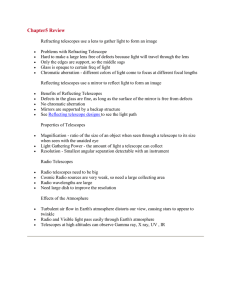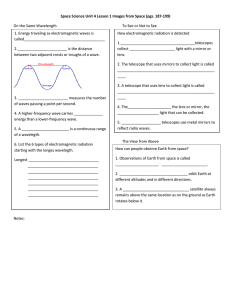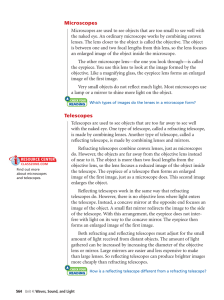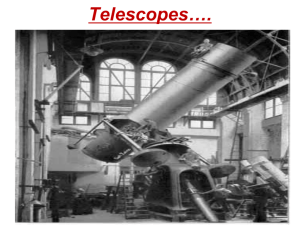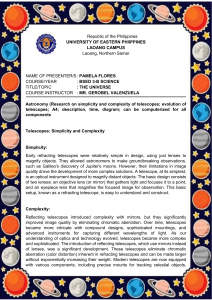Telescopes
advertisement
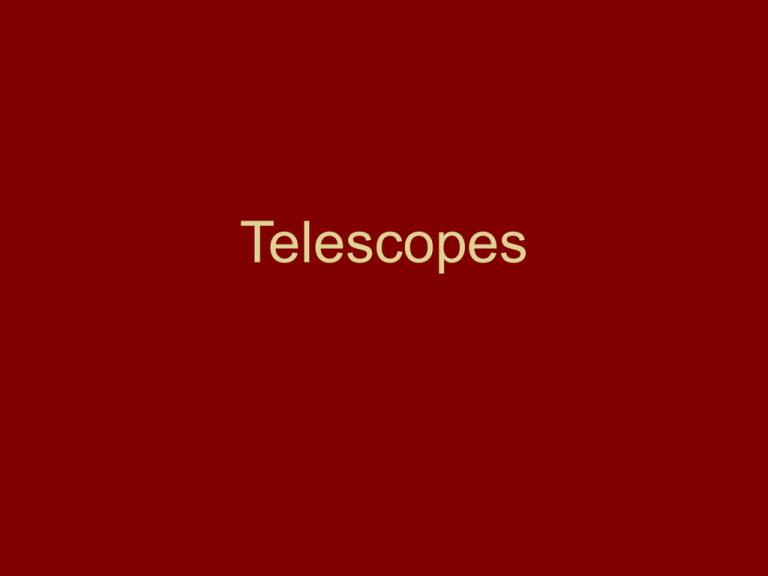
Telescopes Galileo 1609 The Moon as a World Jupiter has Moons Refracting telescopes Isaac Newton’s reflecting telescope Reflecting telescope Objective mirrors instead of lenses Three Powers • Magnifying • Resolving • Light Gathering Magnifying Power • Ability to make objects appear larger in angular size • One can change the magnifying power of a telescope by changing the eyepiece used with it • Mag Power = focal length of objective divided by the focal length of the eyepiece Resolving Power • Ability to see fine detail • Depends on the diameter of the objective lens or mirror Light Gathering Power • The ability to make faint objects look brighter • Depends on the area of the objective lens or mirror • Thus a telescope with an objective lens 2 inches in diameter has 4 times the light gathering power of a telescope with a lens 1 inch in diameter Herschel & Lord Rosse 19th century: epoch of the large refractors Refracting telescopes Lick Vienna Yerkes Observatory 20th century Large Reflectors Come of Age Mount Wilson Palomar (5-m) 4 meter Reflecting telescope Objective Mirror Dome of 4 meter Kitt Peak Keck Telescopes Rooftop telescopes MSU Campus Observatory SOAR Telescope SOAR Telescope -- Cerro Pachon Astronomical “seeing” • Blurring effect of looking through air • Causes stars to twinkle Bad seeing on this side Good seeing on this side Electromagnetic Spectrum Radio Telescopes Arecibo Very Large Array Very Large Array Observing from space • No clouds • Perfect seeing • Can see wavelengths of light blocked by the earth’s atmosphere Hubble Space Telescope
